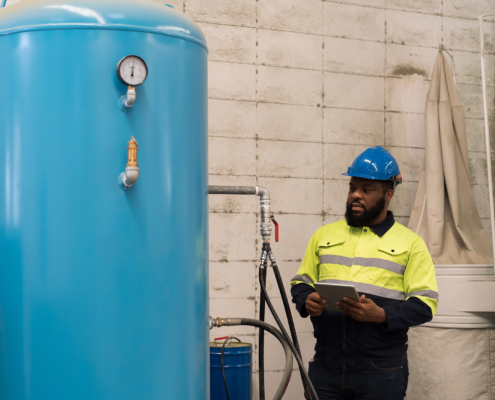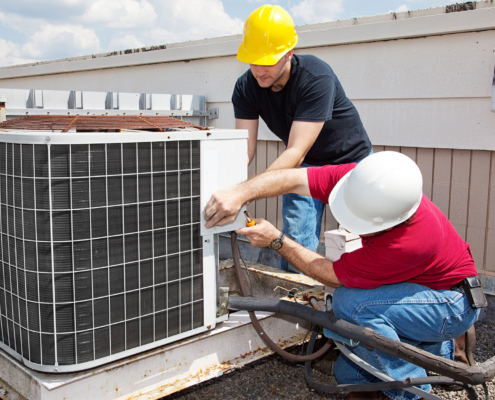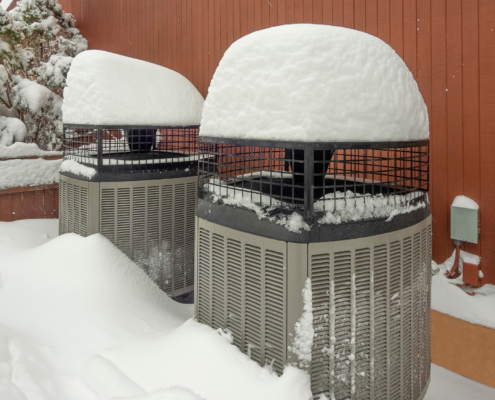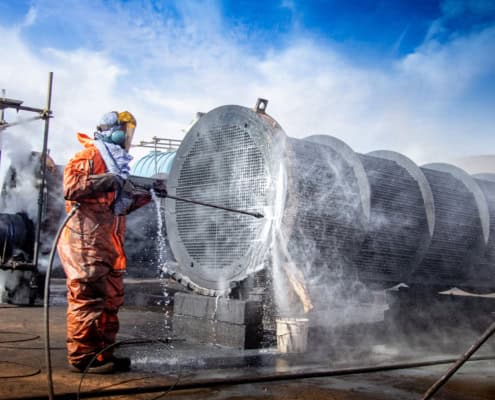 https://agservicestx.com/wp-content/uploads/2025/05/The-Role-of-Commercial-Air-Compressors-in-Various-Industries.jpg
1250
2000
AbstraktMarketing
/wp-content/uploads/2021/02/cropped-AG-Piping-01-300x30m-300x300.png
AbstraktMarketing2025-05-21 12:24:582025-07-04 20:23:06The Role of Commercial Air Compressors in Various Industries
https://agservicestx.com/wp-content/uploads/2025/05/The-Role-of-Commercial-Air-Compressors-in-Various-Industries.jpg
1250
2000
AbstraktMarketing
/wp-content/uploads/2021/02/cropped-AG-Piping-01-300x30m-300x300.png
AbstraktMarketing2025-05-21 12:24:582025-07-04 20:23:06The Role of Commercial Air Compressors in Various IndustriesDealing With Frozen HVAC Systems: Signs and Solutions
A frozen HVAC system is a common issue that can lead to significant discomfort and potential damage to your unit if not addressed promptly. Even southern states like Texas can experience the impact of frozen HVAC systems during the winter months. Recognizing the signs of a frozen unit and understanding how to fix it is crucial in maintaining the longevity and efficiency of your HVAC system.
Understanding Frozen HVAC Systems
Frozen HVAC systems occur when the heat exchange process gets interrupted, leading to ice formation on the HVAC unit, particularly the evaporator coil and refrigerant lines. In an ideal scenario, your air conditioner absorbs warm air from your building, cools it over the evaporator coil, and then circulates it as cold air.
However, issues such as low refrigerant levels, inadequate air flow, or malfunctioning components can disrupt this process, causing the system to freeze. This condition not only hinders the efficiency of your air conditioning unit but can also lead to severe damage if not addressed promptly.
Causes of HVAC System Freezing
A variety of factors can lead to a frozen HVAC unit, including:
- Low refrigerant levels, often resulting from leaks, reduce the pressure in the system, causing temperatures to drop below freezing.
- Inadequate airflow due to clogged air filters, closed supply vents, or faulty blower fans prevents heat exchange, leading to freezing.
- Operating the AC in cold temperatures can also cause freeze-ups, as the unit is not designed to function in such conditions.
Understanding these causes is pivotal in maintaining the efficiency and longevity of heating systems.
Implications of a Frozen HVAC System
A frozen air conditioner unit is more than just an inconvenience. The immediate effect is that it compromises the efficiency of your air conditioning, leading to discomfort in your facility. Prolonged freezing can damage components, leading to expensive HVAC repairs or a complete system replacement. Moreover, it can cause increased energy consumption as your system works harder to maintain desired temperatures, leading to higher energy bills.
Recognizing Signs of Frozen HVAC Systems
Recognizing the signs of a frozen HVAC system is crucial to address the issue promptly and prevent further damage. Here are some common indicators that may suggest your HVAC system is frozen:
Reduced Airflow and Uneven Heating
One of the first signs you might notice is a significant drop in airflow from your air conditioner’s vents. This reduced air flow can result in uneven heating or cooling in your building, with some areas feeling warmer than others. It indicates that something within your HVAC system, possibly the evaporator coil, is obstructed or frozen.
Physical Ice Buildup on the HVAC Unit and Refrigerant Lines
Visible ice on your air conditioner’s outdoor unit, frozen AC line, or around the refrigerant lines is a surefire sign of a problem. In normal operations, no part of your AC system should have ice. This ice buildup can indicate issues like a refrigerant leak, low refrigerant levels, or airflow restrictions.
Unusual Noises From the HVAC System
Pay attention if your AC unit starts making gurgling, hissing, or banging noises. These sounds can indicate that the refrigerant is leaking or the system is struggling to operate under icy conditions. Ignoring these noises can lead to more significant damage over time.
Frequent Breakdowns and System Shutdowns
A system that constantly freezes and thaws may experience frequent breakdowns. These shutdowns often occur as the system’s built-in safety measure to prevent damage from overheating. If your system frequently stops working, a more profound issue likely needs professional attention.
Excessive Energy Consumption and High Energy Bills
An increase in your energy bill without a corresponding increase in usage typically indicates your HVAC system is working inefficiently. A frozen evaporator coil can cause the system to overwork, drawing more power and significantly raising costs.
After recognizing these signs, the next logical step is to explore practical solutions to address and correct a frozen HVAC system.
Along with freezing, winter also brings numerous additional challenges for HVAC systems that require proactive measures to avoid.
Practical Solutions for Frozen HVAC Systems
If your HVAC systems have frozen over, immediate actions should be taken to resolve the situation. Here are some practical solutions to resolve your frozen HVAC systems.
Defrost Your HVAC System
The first and most straightforward step is to turn off your HVAC unit to let it thaw completely. Depending on the extent of the freeze, this could take several hours. Ensure your air filter is clean and there are no airflow blockages before restarting the system.
Adjust Thermostat Settings
Incorrect thermostat settings can sometimes lead to system freeze-ups. Make sure your thermostat is set to an appropriate temperature for the season, and consider using an “auto” fan setting to ensure consistent airflow through the AC system.
Replace Faulty Components
Faulty or worn-out components, such as a failing blower fan or a refrigerant leak, require professional replacement. Contacting an HVAC pro for a thorough inspection and timely replacement of these parts can prevent future freeze-ups.
Upgrade Your HVAC System
If your HVAC unit is old or inefficient, investing in a newer model can save you from recurring issues like freezing. Modern air conditioners have advanced features that ensure efficient operation and are less likely to experience such problems.
Proactive Measures to Prevent a Frozen HVAC System
Resolving your frozen HVAC system is an excellent first step, but you should also take proactive measures to prevent it from happening again. Let’s explore some HVAC tips for winter freezing.
Regular HVAC System Maintenance
Scheduling annual or bi-annual maintenance checks with a qualified HVAC technician can catch and rectify potential issues before they lead to freezing. These checks often include cleaning the system, inspecting for wear and tear, and ensuring all components function correctly.
Regularly Clean Filters
Dirty or clogged air filters restrict airflow, which can contribute to freezing. Regularly checking and replacing your air filters can maintain optimal airflow and prevent a host of issues, including freezing.
Check Refrigerant Levels
Low refrigerant levels can cause the system to freeze. A licensed technician should check refrigerant levels and inspect for leaks, ensuring the system has the correct refrigerant charge to operate efficiently.
Inspect Ductwork
Leaky or blocked air ducts can also lead to freezing by disrupting normal airflow. Inspecting your ductwork for leaks, obstructions, or damage is another preventive measure to ensure your HVAC system operates efficiently without freezing risks.
By implementing these proactive measures and staying vigilant for signs of issues, facility managers can maintain their units and avoid the inconvenience and expense of dealing with a frozen HVAC system. If you need an HVAC technician to provide routine inspections and HVAC maintenance, turn to the experts at A&G Services.
Protect Your HVAC System With A&G Services
At A&G Services, we recognize the critical importance of maintaining HVAC systems, especially during the cold winter months in Texas. Our understanding of the unique challenges of freezing temperatures enables us to provide unparalleled support, ensuring the efficiency and functionality of HVAC systems year-round. Through comprehensive inspections, our expert technicians can detect early signs of freezing and implement preventive maintenance measures to mitigate potential issues before they escalate.
With A&G Services, you can trust our commitment to keeping your HVAC systems running smoothly, providing you peace of mind and comfort even in the coldest weather. Contact us today to get started.












